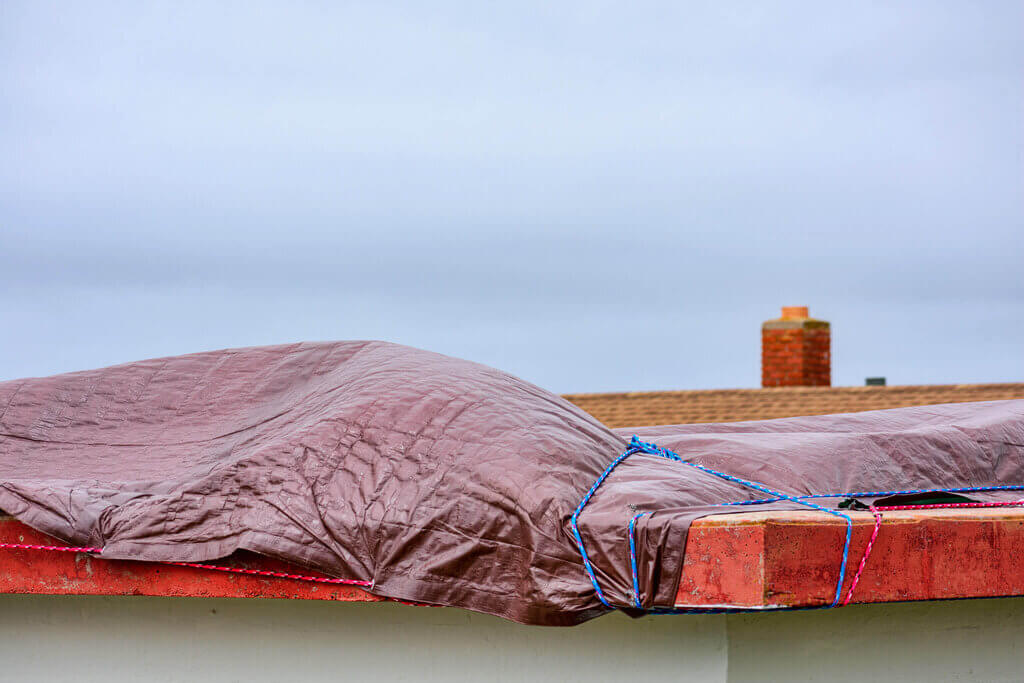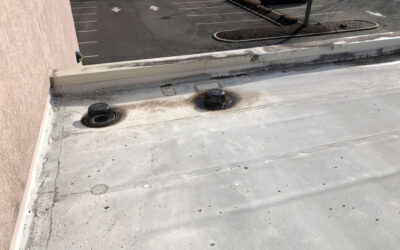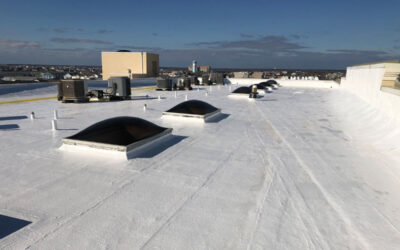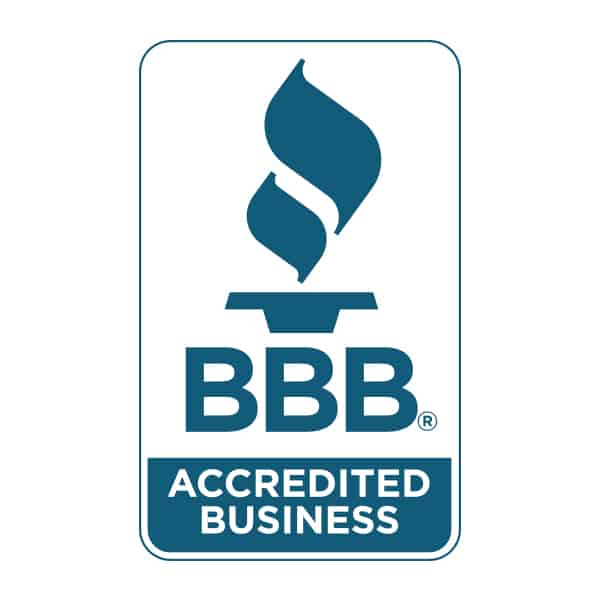A roof tarp is a sheet of canvas, plastic, or vinyl that is used to temporarily protect your roof and the people and things underneath it from water damage. Tarping a commercial or industrial flat roof is challenging because of its size, shape, and vulnerability to weather conditions. Water always seems to make its way through.
Tarping a Sloped Roof
The typical blue tarp that you buy at a hardware store can theoretically keep water out of a sloped roof. If you have a hole or leak in a sloped shingle roof, you could attach a tarp over the hole and gain temporary relief until you can repair the roof. Make sure to place the tarp above the ridge (top of roof) so that the water striking the roof can’t get underneath the tarp.
It becomes problematic and nearly impossible to effectively stop a leak with a tarp on a flat roof.
Challenges with Flat Roofs
The second issue with a flat roof is, once the tarp is down, it is highly unlikely that it stays there. Wind uplift is very strong on a flat roof. If the tarp is not mechanically fastened to the roof, it will probably blow away. If you do mechanically fasten it, then those fastening points will probably become new leaks. And if that isn’t enough, even if you mechanically attach the tarp in a way that is watertight, the tensile strength on blue tarps is so poor that the wind would probably tear it apart at the fastening points and it would cease to be waterproof.
Recommendation
So how do you effectively tarp a flat roof? The short answer is you don’t.
Your best course of action with a flat roof is to bring the tarp inside and capture the water that is infiltrating the building. There are vendors that sell special tarps that have a drain hole in the center where you attach a hose to fill a bucket. So we recommend getting a catch basin erected and calling a roofing professional to come and make a repair.











Add your first comment to this post